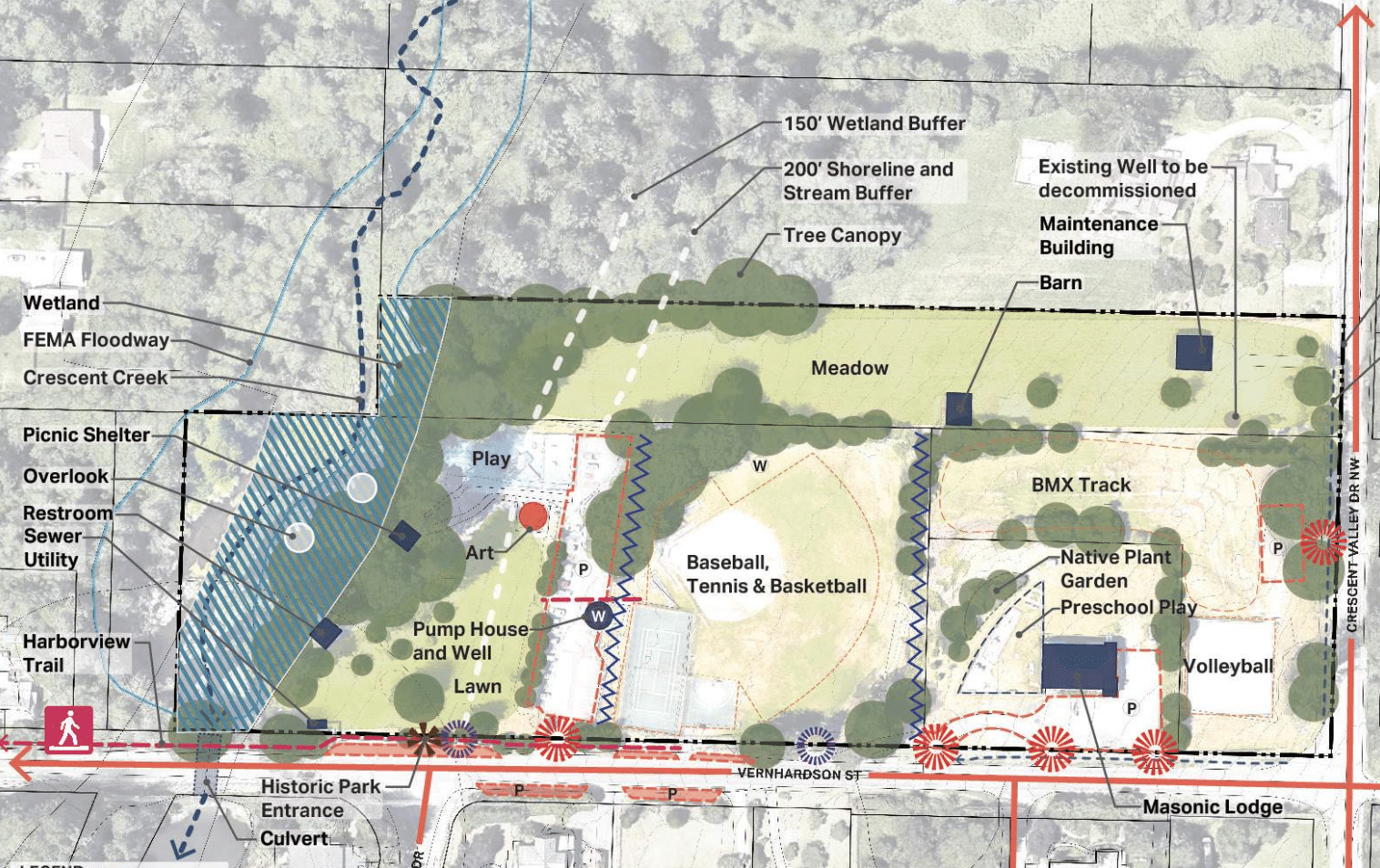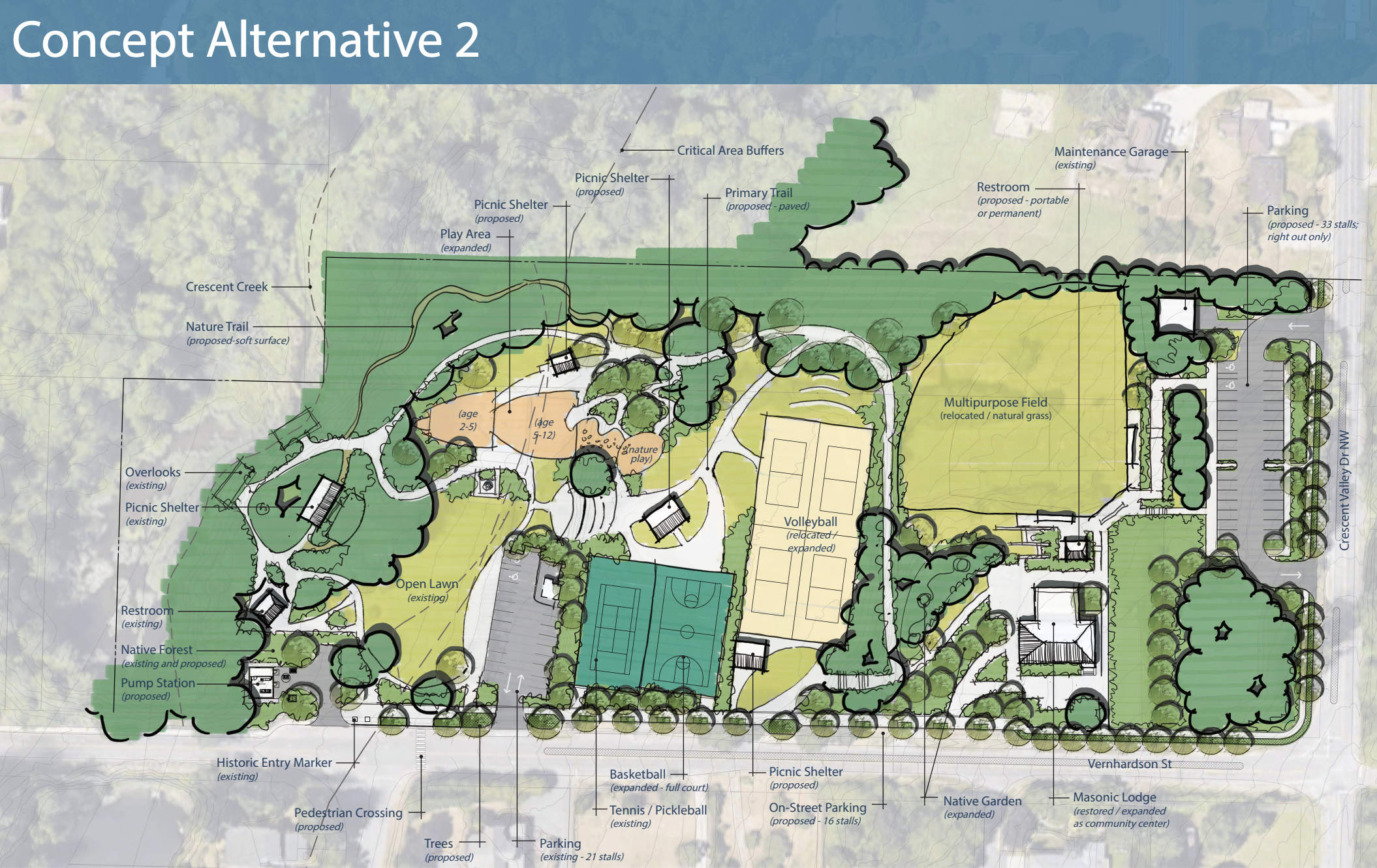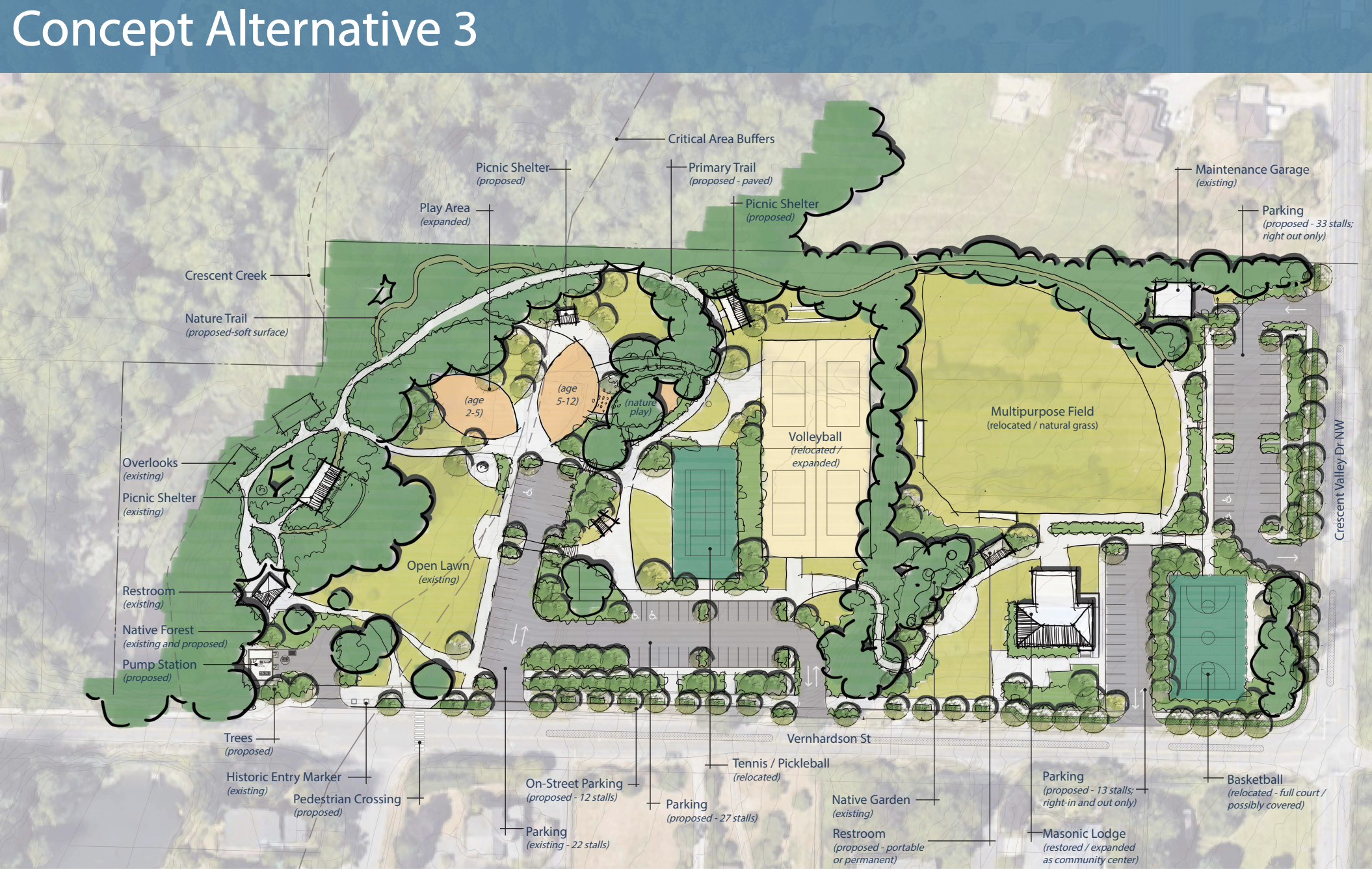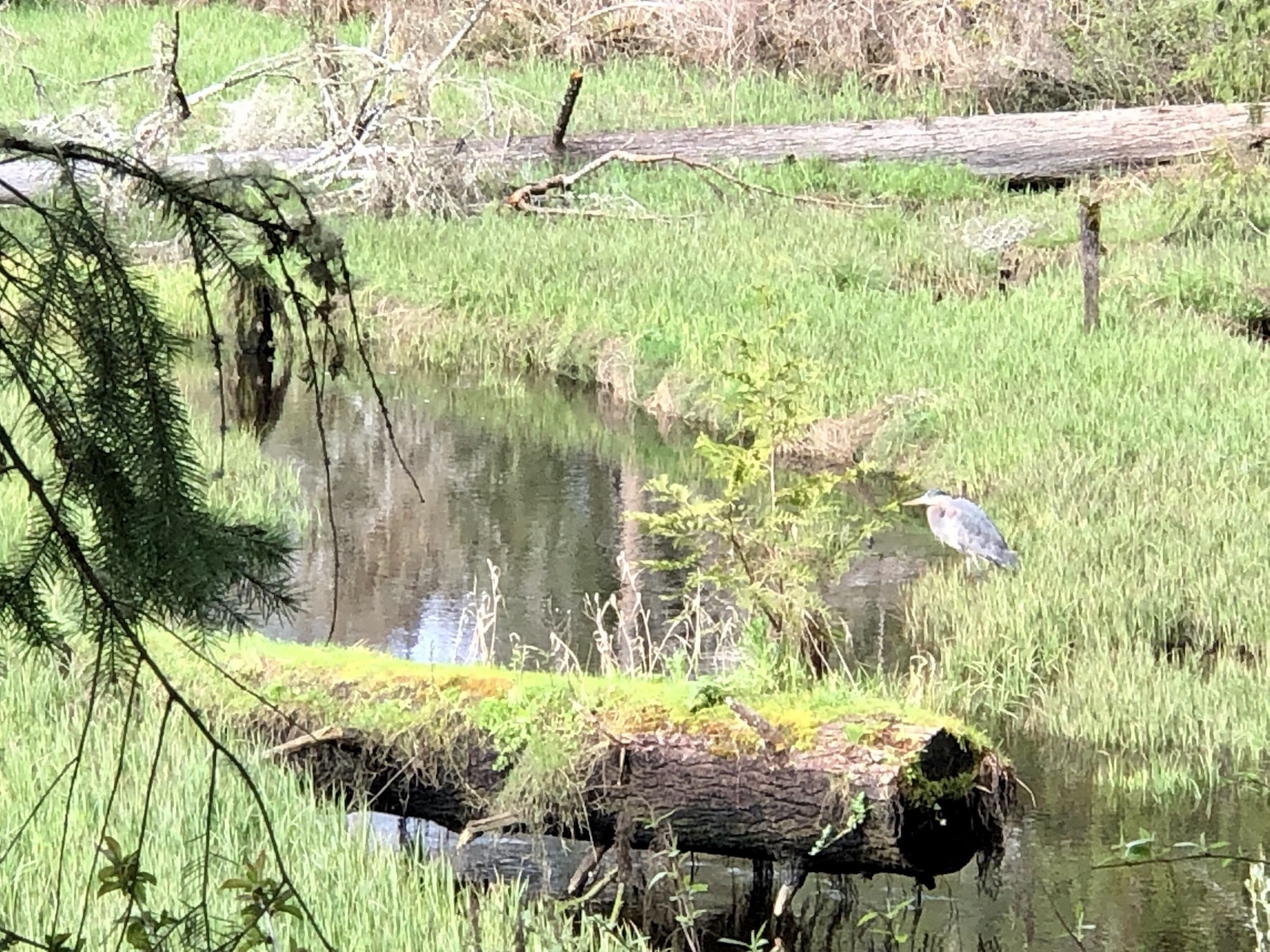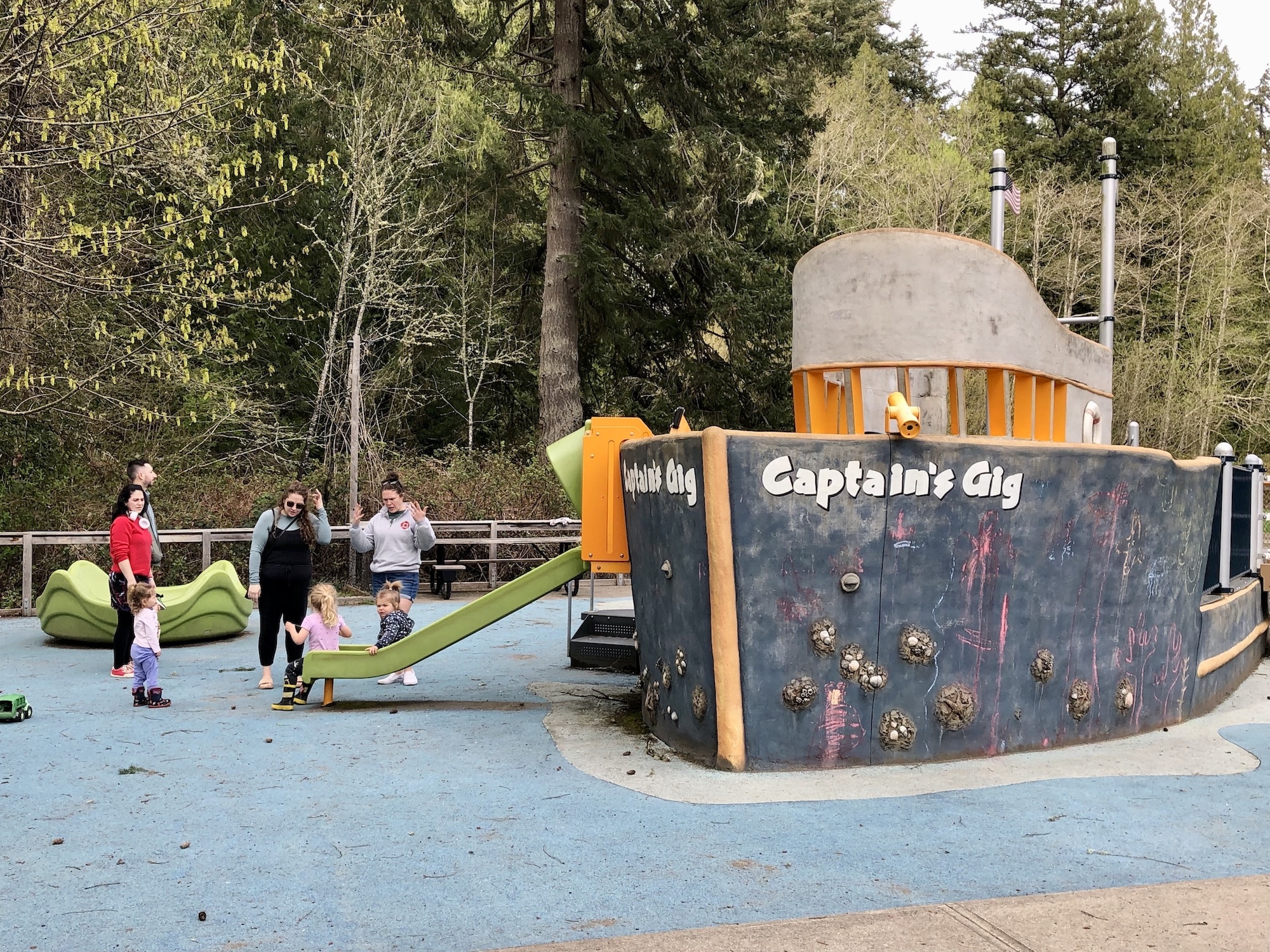Community Government Health & Wellness
Master plan pursuing a more connected Crescent Creek Park
A master plan coming together for Gig Harbor’s Crescent Creek Park focuses not so much on adding amenities as rearranging and better connecting the ample features that are already there.
Health & Wellness Sponsor
Health and Wellness stories are made possible in part by Virginia Mason Franciscan Health, a proud sponsor of Gig Harbor Now.
Nearly 100 people attended an open house Wednesday evening to weigh in on three concepts presented by the city and landscape architecture consultant HBB Landscape Architects. They are titled “Enhance Existing,” “Partial Relocation” and “Fully Redeveloped.” A community advisory committee and a 2023 survey helped to develop guiding principles.
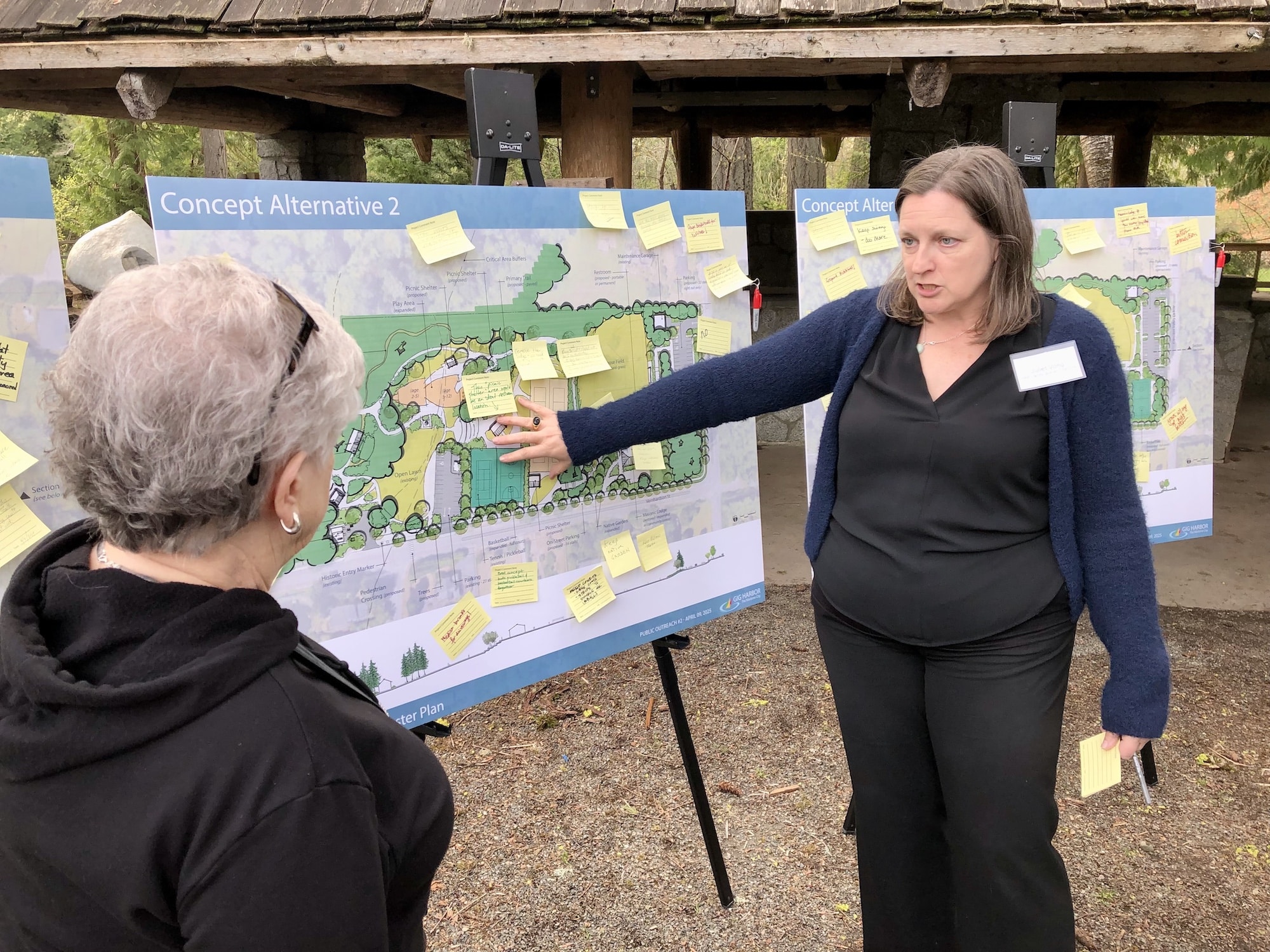
Juliet Vong of HBB Landscape Architects answers questions at an open house Tuesday. Photo by Ed Friedrich
The survey asked people which existing amenities they’d like to see enhanced. The top responses were the sand volleyball courts, trails, pickleball courts and restrooms. Those opinions have persevered, according to attendees Tuesday and comments posted stuck to display boards.
More volleyball, restrooms, parking
Heeding suggestions, designers doubled the two volleyball courts in all three concepts, in different spots. A second restroom is proposed in each, and various parking arrangements added.
Then there’s the booming sport of pickleball. The park has four courts now. Players said Tuesday they want more, a covering and a waiting area. The park sees 3,500 visits per year, often with several people waiting in line, they said.
“It seems to me that the most-used thing in the park is pickleball, so if you’re going to improve something, that’s the thing I would improve,” said Charli Meachum, who plays there nearly every day.
No additional pickleball courts
Alas, “We are not adding pickleball courts because they’re being built at the sports complex,” said city Parks Manager Jennifer Haro. The sports complex debuts next month with six new courts.
Other proposed changes, besides possibly shifting around amenities such as the baseball diamond and courts, include expanding the playground into separate spaces for 2- to 5-year-olds and 5- to 12-year-olds and adding a nature play area in all scenarios. Don’t worry, the fishing boat “Captain’s Gig” will remain. The BMX track would be removed.
The lower bowl, with its mini-daisy-speckled lawn, historic WPA picnic shelter and restroom, and creek viewing platforms, will stay largely unchanged. Other picnic shelters would be added.
It’s nice how it is
Several attendees Tuesday like the park just the way it is and prefer to largely keep it that way. Maybe just build some trails, said Guy Hoppen.
“My bottom-line instinct is probably to just leave well enough alone,” he said. “I played baseball and tennis here when I was a kid. It worked for me and it worked for my kids and it worked for my grandkids.”
Don’t fix what is not broken, echoed Kathy Hall.
“I’ve lived in this neighborhood since 1973,” she said. “This park has always been a special place because it has such a natural feel to it. I think doing less is more, leaving everything as natural as possible.”
Native garden should stay put
Some stakeholders were upset to learn that in one concept the native garden would move to make way for Masonic Lodge parking and the half basketball court eliminated since they last saw sketches.
Don’t be alarmed, said HBB Landscape Architect Juliet Vong. They did make some changes as it’s still in draft stage and they continue working with the city.
“I think there are a lot of ways to address parking to keep the native garden,” she said. “Part of the idea is showing multiple concepts so people can say what they like and don’t like. Initially we mix and match things to get a discussion of what people like.”
Whatever the final result, it will be hooked together with new ADA-compliant sidewalks and trails.
Making connections
“One of the main reasons that we’re doing this is because the park is kind of disconnected now,” said Parks Manager Haro. “We want to have better connectivity between areas of the park. There are no sidewalks. We want to connect the park better and make it a more cohesive space. I don’t think we’re going for new uses and amenities. We’re asking people what they’d like to see enhanced that’s already here.”
A potential master plan has been discussed since the mid-2000s, but has sputtered along, Haro said. It accelerated in 2008, when the city bought a parcel along the park’s north side and two across the creek. It purchased the Masonic Lodge in 2017. The process was interrupted by the Covid pandemic and again when the city gave a citizens group a year to plan a future for the lodge after considering tearing it down. The proposal was submitted last year.
The process restarted in January after a contract amendment with HBB, which is earning $202,000.
Narrowing to one concept
HBB will take what it learned from the open house and a survey that’s now online and distill it into a single preferred concept, Vong said. It will present it and a cost estimate for review by the city and public in late summer or early fall. The city hasn’t budgeted funds for the work, but a completed master plan will facilitate that and pursuit of grants, Haro said.
The park was built by the Works Progress Administration in 1938. The land was previously owned by School District 37, which later consolidated with Peninsula School District #401. Crescent Valley School, which is now the Masonic Lodge, was built on the property in 1915 and closed in 1947. The school district turned the park, which had been known as Crescent Valley Park, over to the city in 1948, shortly after selling the old school building to the Masons.
From 1909 to 1911, before the school district owned the property, Gig Harbor’s only railroad ran through it.


